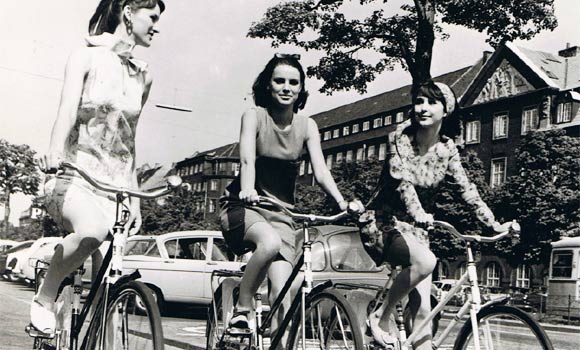HOW DENMARK BECAME A CYCLING NATION
In the 1960s, cars were threatening to displace bicycles in the main Danish cities. But the oil crisis, the environmental movement and a couple of controversial road projects reversed the trend. This is however just part of the story behind why Danes still cycle so much.
By Lotte Ruby, Danish Cyclists Federation
Is it possible to cycle in your city? Is it safe? Is it even attractive? If you can answer yes to all three questions, then the cycling culture in your city has good expectations for growth. But often the answers are in the negative, and then the next question is: how did this come about?
The answer lies in a city’s historical development, because surprisingly many of the major cities that today are packed with cars actually have a past as cities of bicycles. A journey back into Denmark’s history shows how and why Copenhagen and other Danish cities have managed to maintain a flourishing bicycle culture. The bicycle was invented in the latter half of the 1800s. The first bicycles were quite primitive and somewhat awkward to ride. Nonetheless they soon became the big fashion craze – especially among young men in high society. Bicycles were first used for sport and recreation, but in the late 1800s some more practical types of bicycles gradually came into the market, and the general public, who otherwise had poor access to transport, quickly adopted them.
Freedom for all
With the bicycle, ordinary men and women suddenly gained much more freedom of movement. The bicycle was their ticket out of the inner city’s cramped tenement houses and into the clean air of the rapidly growing suburbs. In a Danish context, the bicycle has been inextricably linked with freedom ever since.
Photographs of urban scenes from the 1930s clearly show how Danish cities became cities of bicycles in the first half of the 1900s. People from all social classes cycled on a large scale and several professions also adopted the bicycle – today cycling postmen and home helpers are still a permanent part of street life. The bicycles’ first heyday lasted for half a century until around 1960, when the increasing standard of living slowly but surely made car ownership possible for more and more families. That development was welcomed because cars and single-family houses were vigorous symbols that the depression of the 1930s and the darkness of World War 2 had lifted, and that a brighter future lay ahead.
Read the full story at: http://denmark.dk/en/green-living/bicycle-culture/how-denmark-become-a-cycling-nation/















